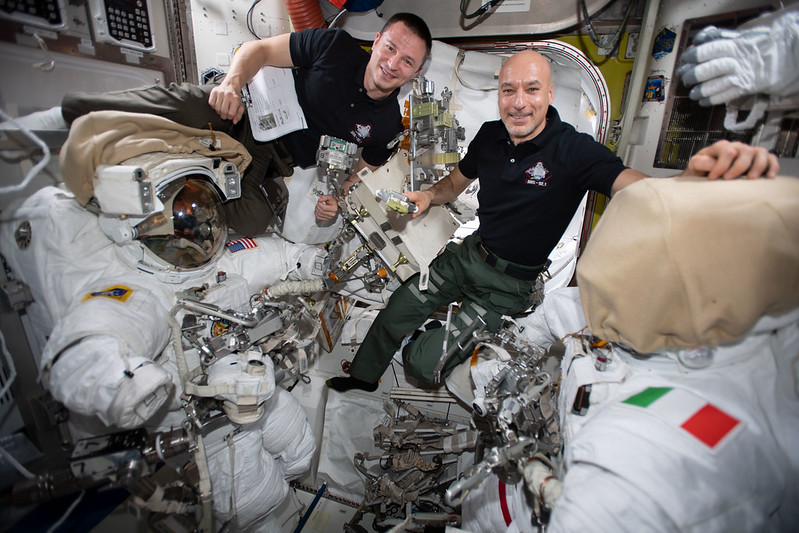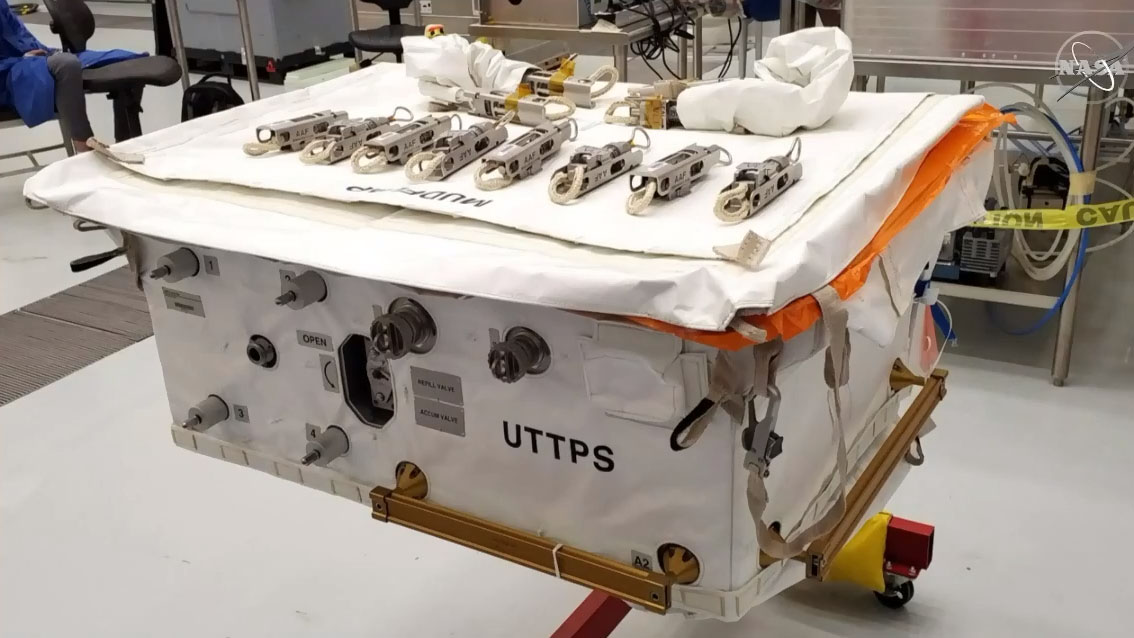Astronauts Are Taking a Tricky Spacewalk to Fix a Dark Matter Experiment. Here's How to Watch
Two astronauts are taking one of the most complicated spacewalks in NASA history today (Nov. 15) to revive an ailing $2 billion experiment on the International Space Station and you can watch it live online.
European Space Agency astronaut Luca Parmitano, the station's Expedition 61 commander, and NASA astronaut Andrew Morgan are expected to spend. 6.5 hours working outside the orbiting lab on the Alpha Magnetic Spectrometer, a sophisticated cosmic ray detector designed to seek out antimatter and dark matter. It's the first of at least four spacewalks planned to repair the instrument, which has a coolant leak and needs a new cooling system.
"These will be very complex...it was never intended for repair in space!" Morgan said in a Twitter post Thursday (Nov. 13).
You can watch the spacewalk live on Space.com, courtesy of NASA TV. Parmitano and Morgan began their work at 6:39 a.m. EST (1139 GMT) as the station sailed 259 miles above the Indian Ocean.
Related: Astronauts to Take 4 Most Challenging Repair Spacewalks Ever
More: How the Alpha Magnetic Spectrometer Works in Space (Infographic)
The Alpha Magnetic Spectrometer (AMS) has been part of the space station's exterior since its installation in May 2011. It was designed to last for at least 3 years, relying on a set of four cooling pumps to keep its systems cool. Two of those pumps failed in 2014, raising concerns for the instrument's life.
"We knew we had to do something about it, especially since AMS was getting such compelling science," Ken Bollweg, the AMS program manager, said in a news conference Tuesday (Nov. 12). "We knew we wanted to extend its life."
Get the Space.com Newsletter
Breaking space news, the latest updates on rocket launches, skywatching events and more!

Over the course of four spacewalks, Parmitano and Morgan will fix a coolant leak and install an entirely new cooling system with tools and techniques never used in space. They are the most complex since NASA's final Hubble Space Telescope repair in 2009, the agency said.
"The AMS originally was designed for a three-year mission and, unlike Hubble, was not designed to be serviced once in space," NASA officials said in a statement. "More than 20 unique tools were designed for the intricate repair work, which will include the cutting and splicing of eight cooling tubes to be connected to the new system, and reconnection of a myriad of power and data cables."

That includes cutting cooling fluid lines, something completely new for spacewalking astronauts.
"Astronauts have never cut and reconnected fluid lines during a spacewalk," NASA officials said.
Editor's note: You can follow today's AMS repair spacewalk live on Space.com.
- In Pictures: The Most Memorable Spacewalks in History
- Antimatter-Hunting AMS Experiment in Space (Photos)
- A Space Magnet, Hunting Dark Matter, Turns Up Juicy Secrets of Cosmic Rays
Email Tariq Malik at tmalik@space.com or follow him @tariqjmalik. Follow us @Spacedotcom and Facebook.

Join our Space Forums to keep talking space on the latest missions, night sky and more! And if you have a news tip, correction or comment, let us know at: community@space.com.

Tariq is the Editor-in-Chief of Space.com and joined the team in 2001, first as an intern and staff writer, and later as an editor. He covers human spaceflight, exploration and space science, as well as skywatching and entertainment. He became Space.com's Managing Editor in 2009 and Editor-in-Chief in 2019. Before joining Space.com, Tariq was a staff reporter for The Los Angeles Times covering education and city beats in La Habra, Fullerton and Huntington Beach. In October 2022, Tariq received the Harry Kolcum Award for excellence in space reporting from the National Space Club Florida Committee. He is also an Eagle Scout (yes, he has the Space Exploration merit badge) and went to Space Camp four times as a kid and a fifth time as an adult. He has journalism degrees from the University of Southern California and New York University. You can find Tariq at Space.com and as the co-host to the This Week In Space podcast with space historian Rod Pyle on the TWiT network. To see his latest project, you can follow Tariq on Twitter @tariqjmalik.









